|
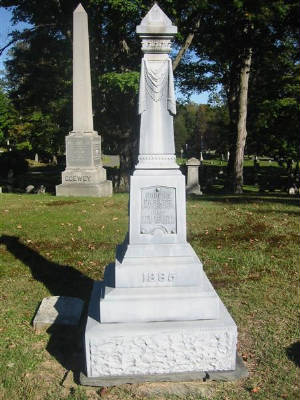
|
| Parker Family Plot |
The Pittsfield Cemetery in Pittsfield, Massachusetts, has numerous monuments dating prior to 1900.
Many of the stones from this period are severely weathered and in many cases unreadable. Lichen and moss cover some.
However, dotting Pittsfield Cemetery are some markers that have resisted the ravages of time. They are a beautiful blue-grey
color with the texture of granite. The inscriptions are as clear and readable as the day they were produced. Knock
on one and you will be surprised. They are hollow. These amazing "stones" are metal. They are made from
what was then called white bronze, which was really a misnomer, as these monuments are made from pure zinc.
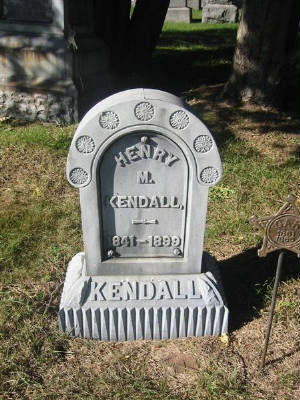
|
| Kendall Family Plot |
M.A. Richardson is credited with inventing the means of creating these zinc monuments in 1873.
He soon took C.J. Willard as his partner in the endeavor. Lacking funds, they contracted with William Walter Evans,
who soon gave up and sold the rights to Wilson, Parsons and Company of Bridgeport, Connecticut. The company was officially
incorporated as the Monumental Bronze Company in 1879. The company was located on the corner of Hallett and
Barnum Streets until 1892, when it relocated into a large factory complex at Howard and Cherry Streets.
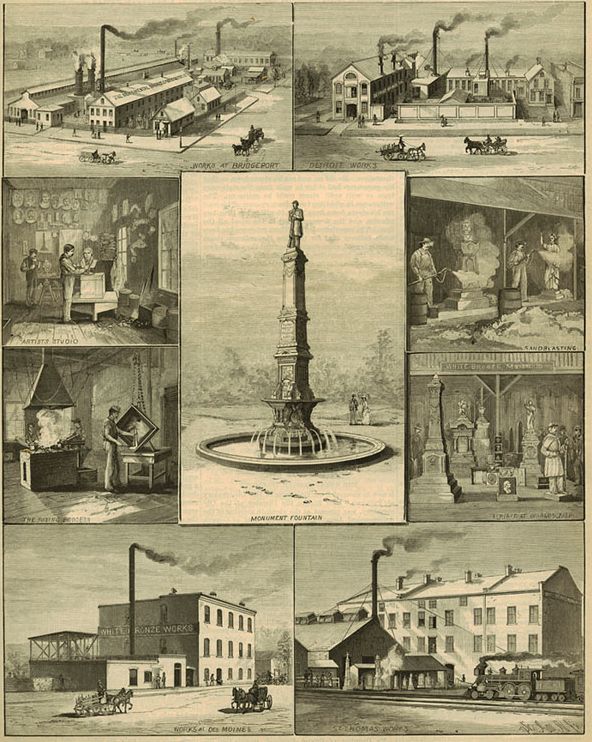
The Monumental Bronze Company produced these monuments for just forty years, from 1874 to 1914. Peak
sales occurred in the late 1880s. Subsidiaries were eventually opened in Detroit, Chicago, Des Moines, Philadelphia,
St. Thomas, Canada, and perhaps New Orleans. The subsidiaries did final assembly work. Most, if not all of the
original casting was done in Bridgeport, Connecticut.
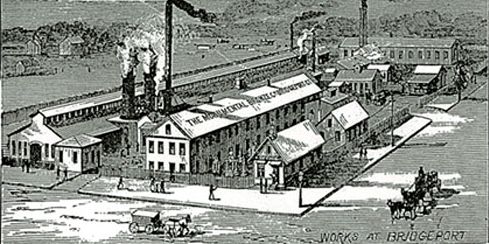
In its heyday, Monumental Bronze Company produced thousands of markers, custom effigies of the deceased,
and stock statues of Faith, Hope, and Charity. Hundreds of white bronze memorials featuring statues of Union
or Confederate soldiers were erected in parks and town squares in over thirty US states. World War One intervened and
the government took over the factory to produce gun mounts and munitions. The entire supply of zinc was required
for the war effort. The Monumental Bronze Company never fully recovered after the war, though they continued to produce
name panels well after they stopped producing the actual monuments.

|
| Bull Family Plot |
To create a white bronze monument, artists first created wax models. The markers used similar designs
to those used for marble and granite monuments. From the wax model, an exact copy in plaster was produced.
Finally, a sand mold was made to form the monuments. The zinc castings were produced in pieces and
fused together utilizing molten zinc at temperatures far beyond its melting point. This process fused the pieces
far better than simple soldering would have done. The piece was then sandblasted and chemically oxidized to produce
its granite appearance. Over time, a thin protective skin of zinc carbonate develops which gives the monuments
their characteristic color. This naturally protective patina is the key to the long-term corrosion resistance of
the monuments.

|
| Hemenway Family Plot |
Custom name panels were produced and attached with screws with special ornamental heads. Stock panels
were also available with inspirational quotes, various flowers, crosses, and other popular symbols and religious motifs.
The name panels could be replaced when additional members of the family died.
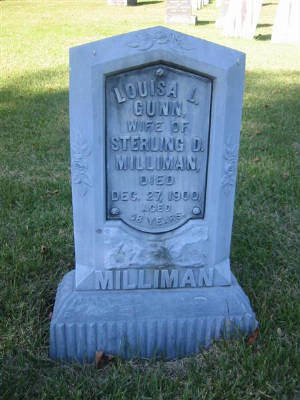
|
| Milliman Family Plot |
Monumental Bronze Company produced most of their white bronze monuments in sizes from just a few inches
tall to nearly fifteen feet high. Many are in the shape of a four sided pillar that gradually tapers in towards the top. The
seams run vertically along the edges. The base is often finished to resemble rough rock. The family name is often found molded
into the base. An enormous white bronze is the Soldiers' Monument in Schoharie, New York's Old Stone Fort
Cemetery. It commemorates Jacob A. L. Fisher, a Union soldier, and at one time stood an incredible twenty-seven
feet tall.
Click here to view the white bronze monument of Jacob A. L. Fisher
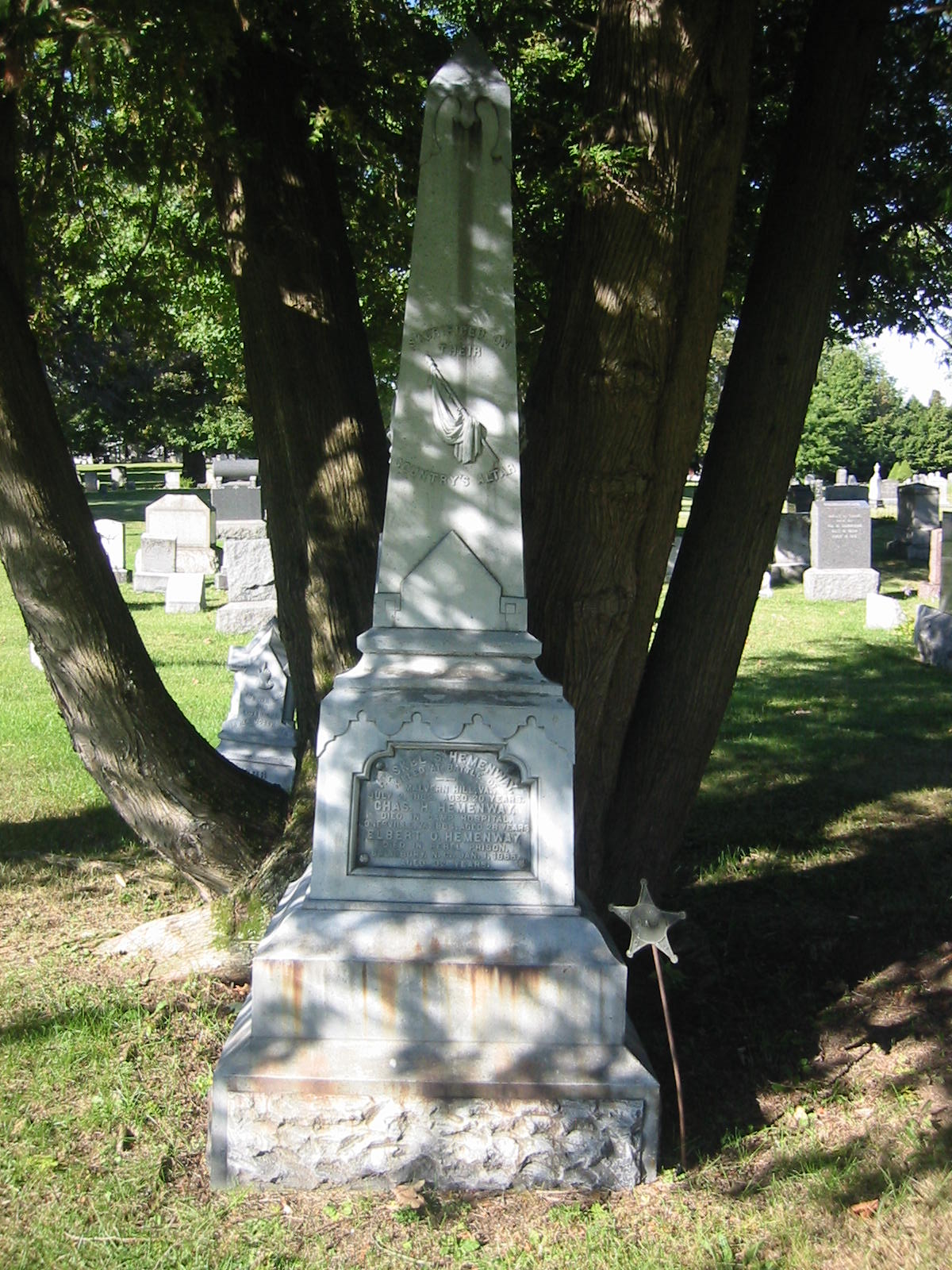
|
| Hemenway Family Plot |
The monuments were sold primarily through catalogs and sales agents at prices ranging from under $2 to $5000.
This was less than the prices of comparable stone monuments and the shipping costs were significantly reduced due to the lower
weight. These white bronze monuments were erected in limited numbers across the entire United States and Canada.

|
| Parsons Family Plot |
With over one hundred years of exposure to the harsh New England weather, the white bronze monuments in
Pittsfield Cemetery have remained for the most part in superb condition. It should be noted that the material is
susceptible to creeping (permanent deformation over time), seam separation, and breakage caused by an object striking
the monument.
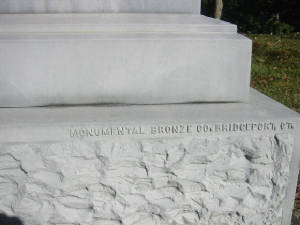
|
| Parker Family Plot |
It is unusual to find a cemetery with more than a dozen white bronze monuments. Most have
far less, if any at all. A cemetery that has more than a few may signify that a very successful sales agent served
the area. The Pittsfield Cemetery contains just nine examples of white bronze, in contrast to thousands of traditional
stone monuments. The rarity of these white bronze monuments is reflective of their brief forty year production run.
Many people of the late Victorian era regarded the monuments as cheap imitations of stone monuments. A few
cemeteries even banned them. While these people did not accept the original claims that these monuments were superior
to stone, in reality, they have withstood the test of time.
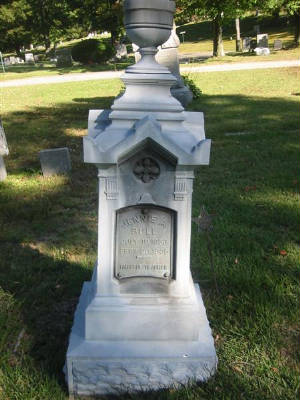
|
| Bull Family Plot |
The next time you are in the older part of your local cemetery, look for a bright clean stone of a beautiful
blue-grey color. Give it a knock...you might be surprised at what you find!

|
| Hemenway Family Plot |
|
